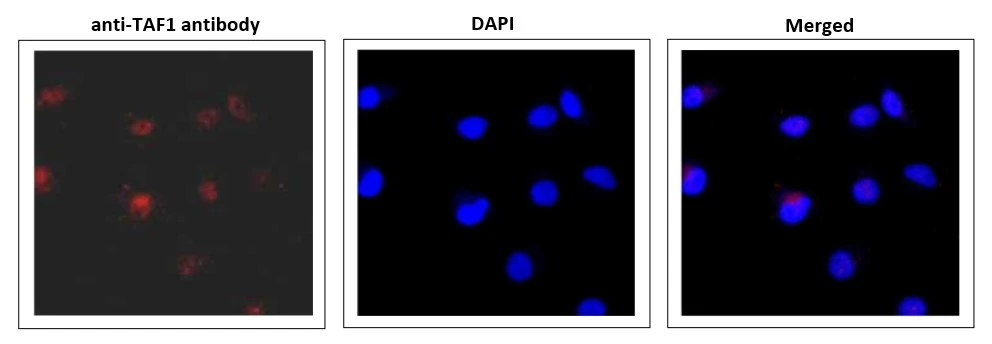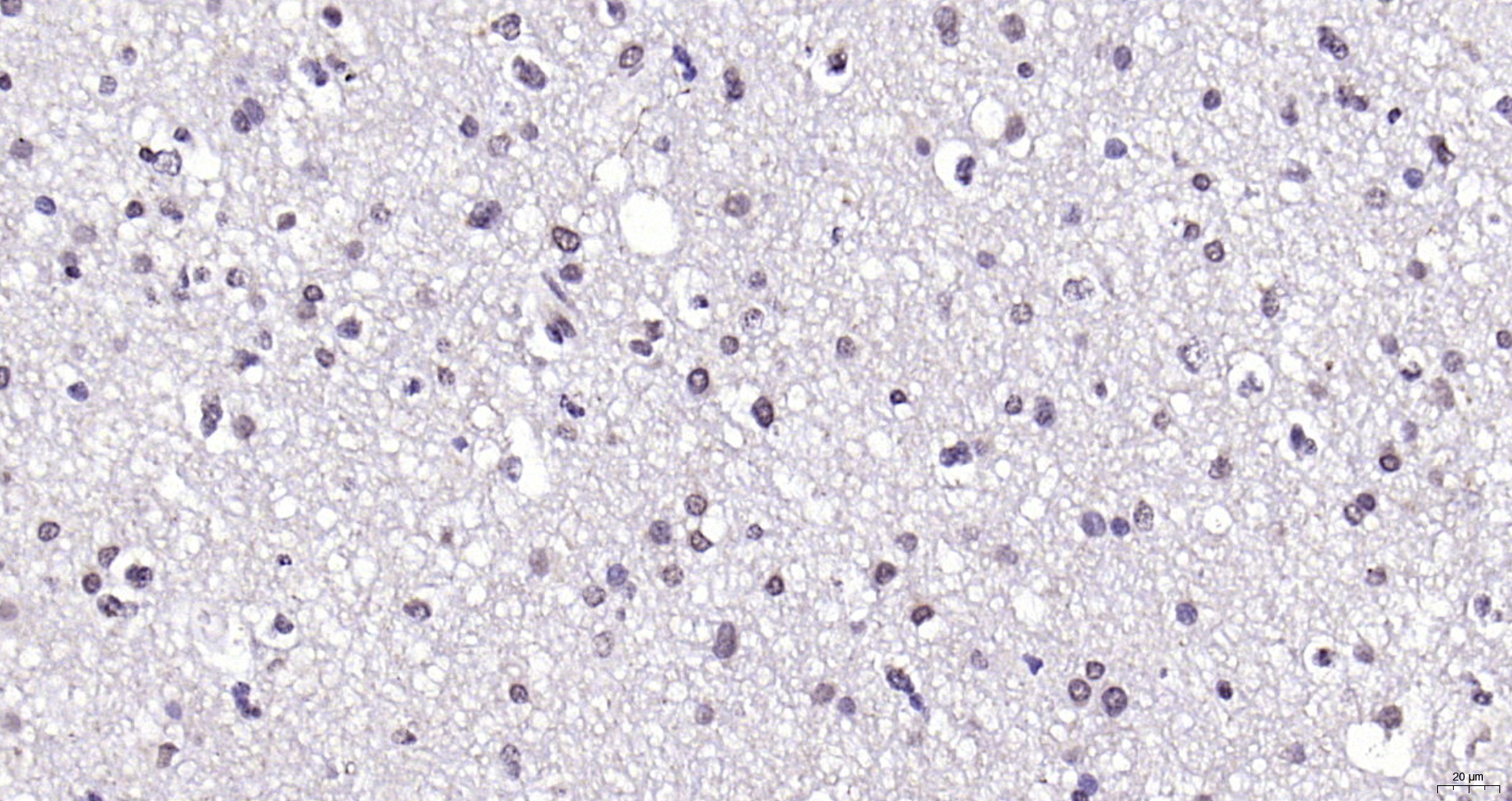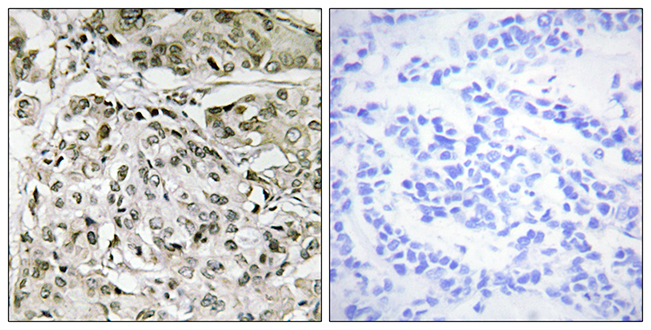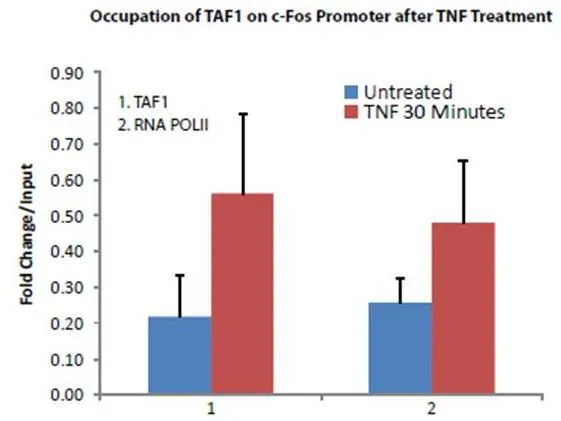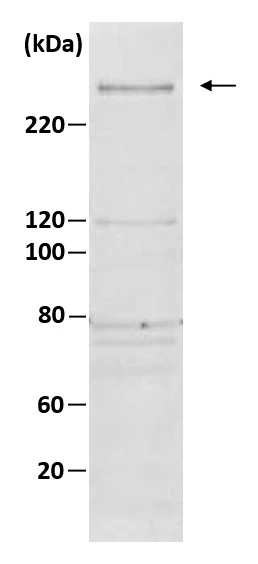
WB analysis of HeLa whole cell lysate (10 microg) using GTX00900 TAF1 antibody.
TAF1 antibody
GTX00900
ApplicationsImmunoFluorescence, Western Blot, ImmunoCytoChemistry
Product group Antibodies
ReactivityHamster, Human, Mouse, Rat
TargetTAF1
Overview
- SupplierGeneTex
- Product NameTAF1 antibody
- Delivery Days Customer9
- Application Supplier NoteWB: 1:1000. ICC/IF: 1:1000-1:5000. *Optimal dilutions/concentrations should be determined by the researcher.Not tested in other applications.
- ApplicationsImmunoFluorescence, Western Blot, ImmunoCytoChemistry
- CertificationResearch Use Only
- ClonalityPolyclonal
- ConjugateUnconjugated
- Gene ID6872
- Target nameTAF1
- Target descriptionTATA-box binding protein associated factor 1
- Target synonymsBA2R, CCG1, CCGS, DYT3, DYT3/TAF1, KAT4, MRXS33, N-TAF1, NSCL2, OF, P250, TAF(II)250, TAF2A, TAFII-250, TAFII250, XDP, transcription initiation factor TFIID subunit 1, TAF1 RNA polymerase II, TATA box binding protein (TBP)-associated factor, 250kDa, TBP-associated factor 250 kDa, cell cycle gene 1 protein, cell cycle, G1 phase defect, complementation of cell cycle block, G1-to-S, transcription factor TFIID p250 polypeptide
- HostRabbit
- IsotypeIgG
- Protein IDP21675
- Protein NameTranscription initiation factor TFIID subunit 1
- Scientific DescriptionInitiation of transcription by RNA polymerase II requires the activities of more than 70 polypeptides. The protein that coordinates these activities is the basal transcription factor TFIID, which binds to the core promoter to position the polymerase properly, serves as the scaffold for assembly of the remainder of the transcription complex, and acts as a channel for regulatory signals. TFIID is composed of the TATA-binding protein (TBP) and a group of evolutionarily conserved proteins known as TBP-associated factors or TAFs. TAFs may participate in basal transcription, serve as coactivators, function in promoter recognition or modify general transcription factors (GTFs) to facilitate complex assembly and transcription initiation. This gene encodes the largest subunit of TFIID. This subunit binds to core promoter sequences encompassing the transcription start site. It also binds to activators and other transcriptional regulators, and these interactions affect the rate of transcription initiation. This subunit contains two independent protein kinase domains at the N- and C-terminals, but also possesses acetyltransferase activity and can act as a ubiquitin-activating/conjugating enzyme. Mutations in this gene result in Dystonia 3, torsion, X-linked, a dystonia-parkinsonism disorder. Alternative splicing of this gene results in multiple transcript variants. This gene is part of a complex transcription unit (TAF1/DYT3), wherein some transcript variants share exons with TAF1 as well as additional downstream DYT3 exons. [provided by RefSeq, Oct 2013]
- ReactivityHamster, Human, Mouse, Rat
- Storage Instruction-20°C or -80°C,2°C to 8°C
- UNSPSC12352203


